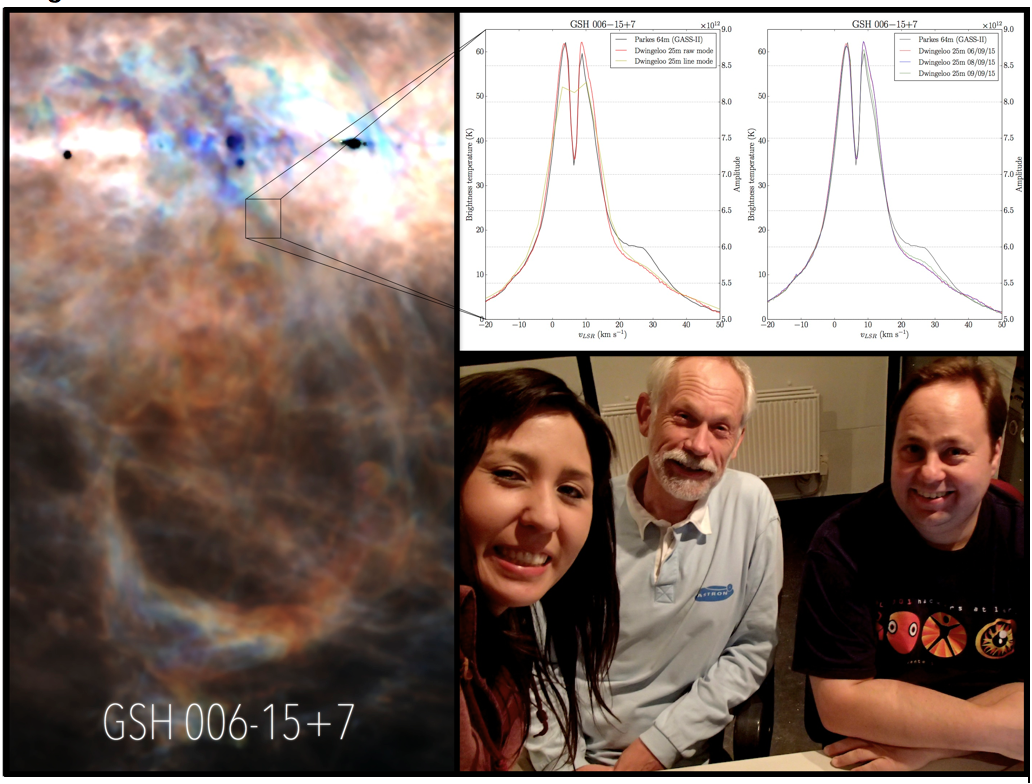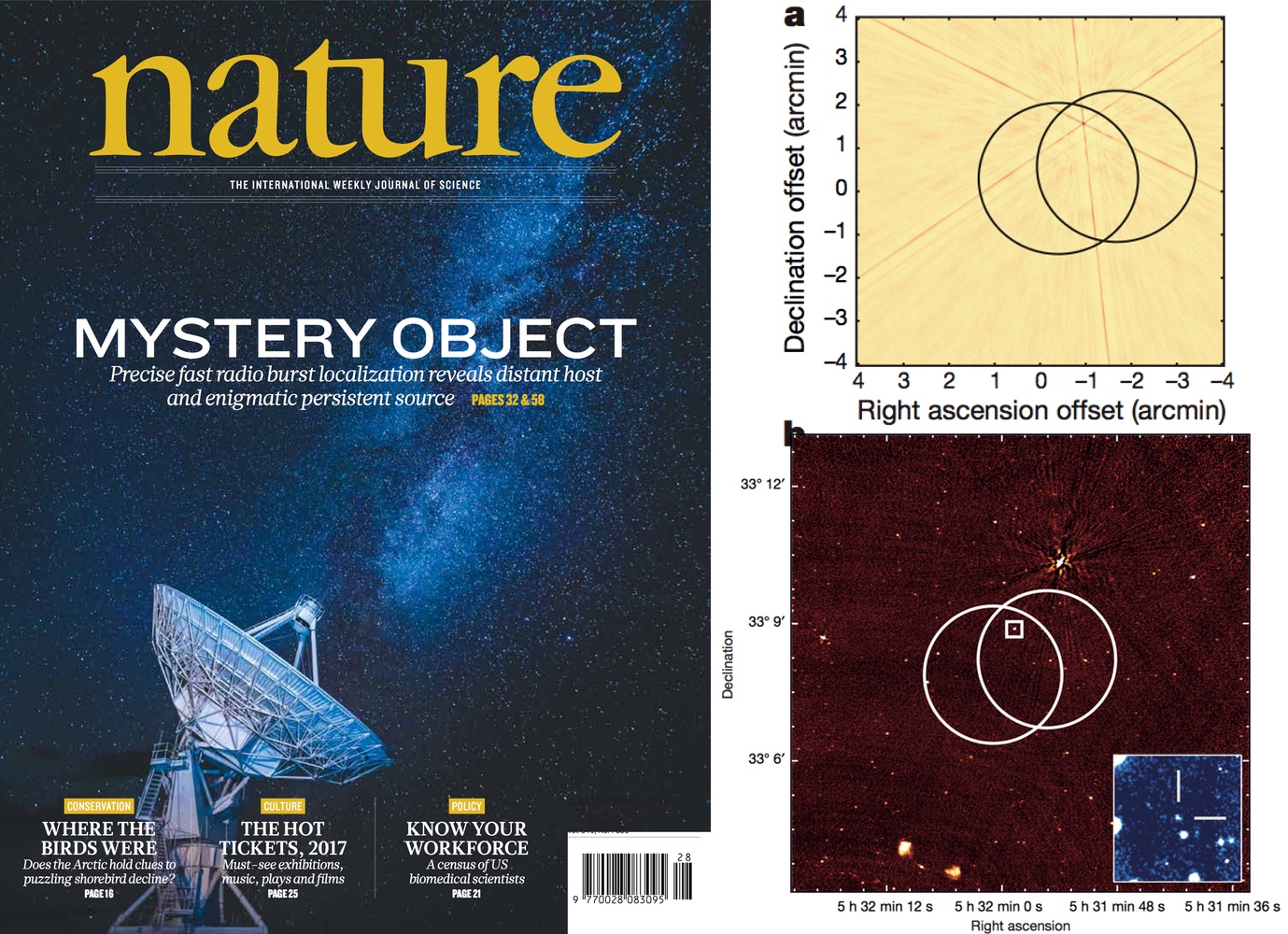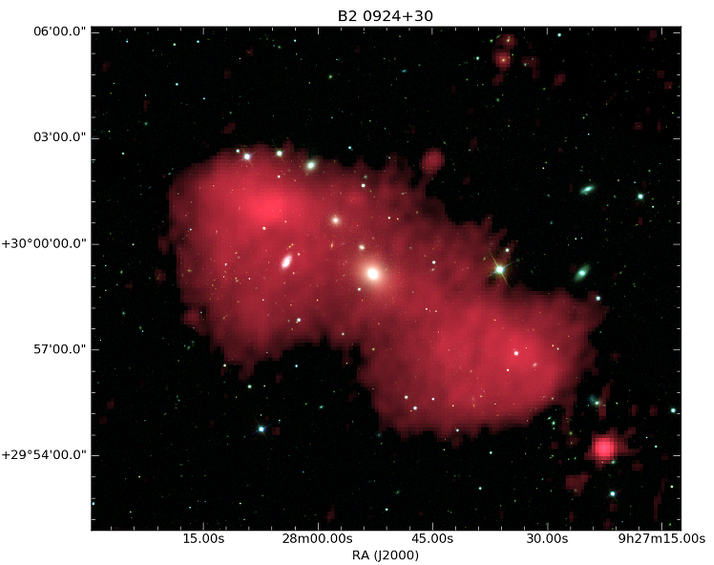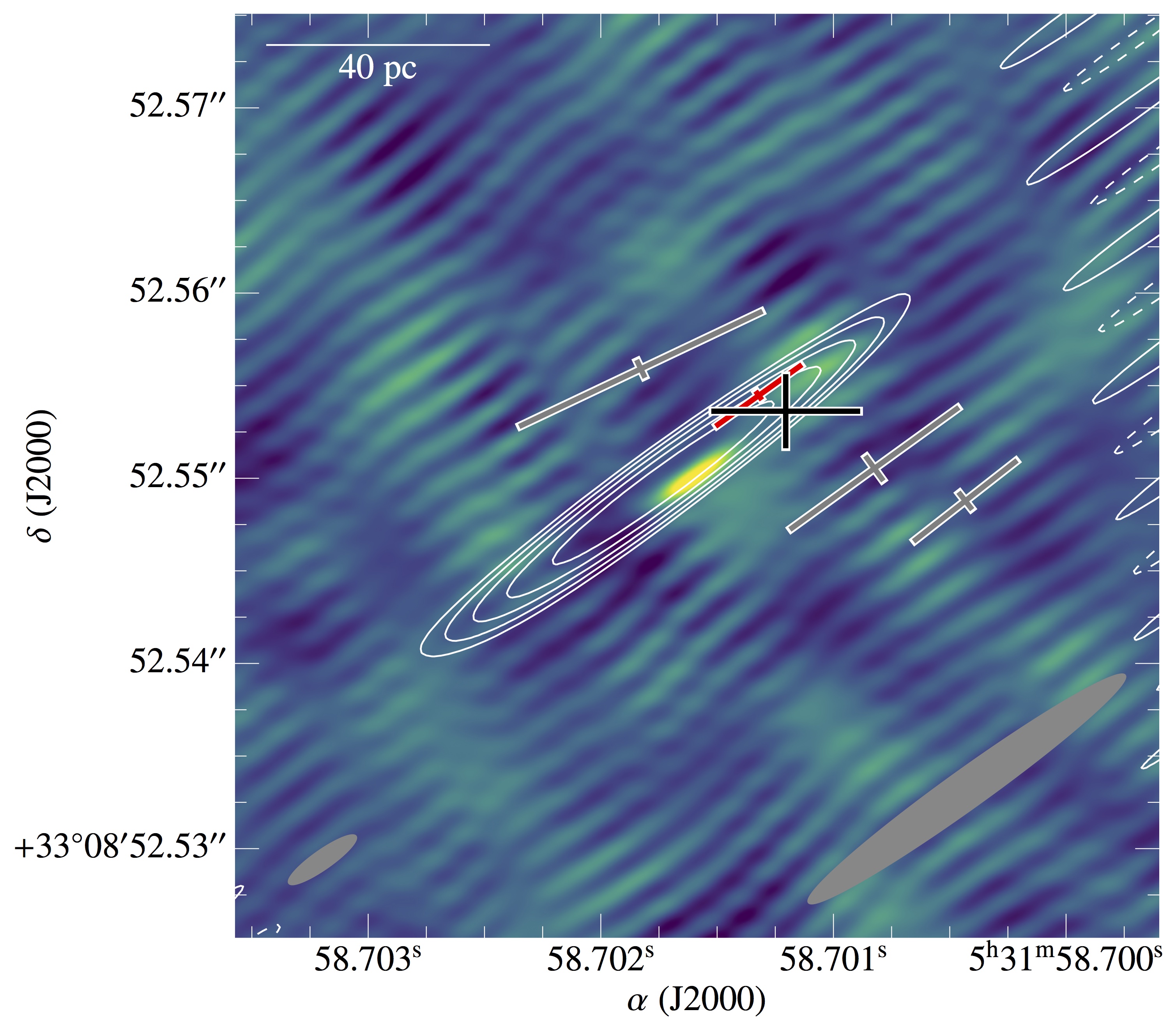![]() © Benito Marcote
© Benito Marcote
The European VLBI Network (EVN) observed the repeating Fast Radio Burst FRB 121102 in eight sessions that span 1 February to 21 September 2016. These observations included the regular European EVN stations plus the 305-m William E. Gordon Telescope at the Arecibo Observatory. Using the new EVN software correlator (SFXC) we were able to correlate in real time the data transferred to JIVE via high-speed fiber networks but also to buffer the baseband EVN data, producing afterwards high-time-resolution correlations. Arecibo provided high-sensitivity data to search for bursts.
From the eight epochs, only on 20 September 2016 we observed bursts from FRB 121102. Four bursts were detected within this 2.5-h observation. One of them showing a ~4 Jy peak, one order of magnitude larger than the other three bursts. This allowed us to localize FRB 121102 with a precision of a few milliarcseconds.
Comparing the obtained positions with the persistent radio source we determined that both are coincident with a projected separation smaller than 40 pc, given the distance of the persistent source.
A 5-GHz EVN observation allowed us to establish strong constraints on the compactness of the persistent radio source. This source remains unresolved in the EVN images, implying a projected size of < 0.7 pc (0.2 mas angular extent). Additionally, this observation allowed us to set a lower limit for its brightness temperature of > 5 x 10^7 K.
The EVN observations have provided strong evidence for a direct physical link between the bursts of FRB 121102 and the compact persistent radio source. Although the origin of the bursts remains unclear, two explanations arise as the most probable ones: a burst source associated with a low-luminosity active galactic nucleus (or massive black-hole related system), and a young neutron star energizing a supernova remnant.
The Figure represents the persistent source at 1.7 GHz (contours) and at 5.0 GHz (color scale) compared to the localization of the bursts (crosses). The red cross represents the strongest burst, which is expected to exhibit the most accurate position. The black cross represents the weighted average position considering the four bursts.
You can find the details of this study in Marcote, Paragi, Hessels et al. (2017, ApJL, 834,8).
 © RO, RUG CIT
© RO, RUG CIT © ASTRON
© ASTRON © TU/e, 2017.
© TU/e, 2017. © Vanessa Moss & CAMRAS
© Vanessa Moss & CAMRAS © Neal Jackson, Marco Iacobelli, Leah Morabito, for the Long Baseline Working Group Busy Week team.
© Neal Jackson, Marco Iacobelli, Leah Morabito, for the Long Baseline Working Group Busy Week team. © Karamanavis et al. 2016, A&A, 586, A60; Karamanavis et al. 2016, A&A 590, A48
© Karamanavis et al. 2016, A&A, 586, A60; Karamanavis et al. 2016, A&A 590, A48 © ASTRON
© ASTRON © Benito Marcote
© Benito Marcote © Astron
© Astron © Aleksandar Shulevski, Raffaella Morganti et al.
© Aleksandar Shulevski, Raffaella Morganti et al. © Pfrommer in prep.
© Pfrommer in prep. © none?
© none? © M Haverkorn, G. White, L. Driessen, R. Oonk, M. Arias
© M Haverkorn, G. White, L. Driessen, R. Oonk, M. Arias © RossBurns
© RossBurns © Benito Marcote
© Benito Marcote © Amina Helmi/Jovan Veljanoski/Maarten Breddels/University of Groningen
© Amina Helmi/Jovan Veljanoski/Maarten Breddels/University of Groningen © Alex Clarke et al.
© Alex Clarke et al. © ASTRON
© ASTRON © R&D Compute group
© R&D Compute group © Francesco de Gasperin - Maaijke Mevius
© Francesco de Gasperin - Maaijke Mevius